What makes a good Kickstarter project and what kills it? What makes backers decide whether a project looks shady or trustworthy? It takes a lot more than a good idea to win us over, it takes a lot of hard work. However, there are some pitfalls that are easily avoided along the way. These Kickstarter Sins that make me throw me eyes up to heaven and run a mile in the opposite direction. This is a little list of 7 Deadly Kickstarter Videogame Sins and if a Kickstarter has two or more of them it goes to Kickstarter hell!
If you want to avoid that fate, keep reading.
Sloth – Lacking Details
One of the most prominent parts of a Kickstarter campaign is the text. This is how you convince potential backers that your idea is worth them risking their money on. One would think it would be fairly obvious that in order to convince them, you’ll need to write about the project. However, many projects don’t even manage that much. Too often, I see Kickstarters that don’t even manage to tell the reader what sort of game they plan to make.
Sometimes all of the details are contained within the video, leaving the actual page looking bare and uninteresting. This is one of the things that put me off backing Escape From Pleasure Planet, I didn’t figure out it was a point-and-click adventure game until I watched the video. Some of the best ideas can be summed up in just a few short sentences, but they still need to be explained in detail. Having too much information is okay; it gives readers the choice to skim over your content. If you don’t have enough content, you have robbed them of that ability.
Certain elements can be explained with the use of GIFs and screenshots. This works well for showing off moves sets or unique mechanics. A picture is worth a thousand words, however and it should not be used as a replacement for text. An image requires context to be beneficial. Even adding a simple caption can help make a picture relevant.
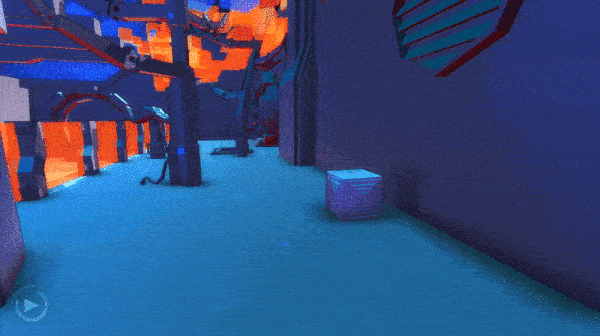
A GIF can be used to show how a mechanic works when added alongside a text explanation.
(Kickstarter: Lightime)
Pictures are more than a way to colour a page or fill in space. Be aware that using multiple high quality images slows down the page’s load time. This means people are more likely to click away from your page without reading (especially if they on a mobile or tablet device) and that your Kickstarter will appear lower in search rankings. I was incredibly frustrated when trying to view Dire Vengeance’s Kickstarter page because Chrome kept presenting me with an option to kill the page due to the sheer amount of GIFs.
The Lesson: Spend time explaining as many details and mechanics of your game as possible. Always mention what genre of game it is. Use pictures in context to help convey ideas rather than using them to add colour to a page. Remember that using GIF and high-quality images can slow down your Kickstarter page’s loading time.
Ignorance – No Prior Work
Kickstarter should not be the starting place for your idea. Ideally, the developer should push themselves as far as they can before bringing their idea into the public can. Humans are very visual creatures, we respond well to seeing prototypes and pictures. If you are passionate about your project then this shouldn’t be an issue. Having something to show your audience is always a positive. It is important to show backers that you are invested in your project, so simply spending the money to put your game on Steam Greenlight can give people confidence in your campaign.

Having some previous work to show can make all the difference to a Kickstarter campaign. (Kickstarter: Quantum Suicide)
Personally, I always judge projects on how much effort they put into their campaigns. It was one of my main reasons for backing Quantum Suicide. The team is clearly dedicated to promoting and showing off everything they have already put into their project.
Here are some elements you can include on your Kickstarter Campaign page to show prior work and inspire confidence:
Link to Steam Greenlight Page:
Even if your game hasn’t been voted in yet, just having a page shows you have invested in your idea. It also works as an advertisement for your Kickstarter.
A Demo, Alpha, or Pre-alpha:
This gives backers a chance to test out the game and to see that you have been working on the idea. Remember, a lot of Kickstarter backers are wary of scammers, so this is a good way to show you aren’t one.
A soundtrack:
This works especially well if you have the soundtrack as a reward for the game. It also shows you have invested money into your game for music.
Video of Gameplay:
If you don’t have enough to make a demo, you can still video some of the working areas of your prototype. I also recommend having a video even if you have a demo since not everyone wants to download your demo.
GIFs of Gameplay Inside Engine:
If your game is not yet playable you can still show gifs of what you are working on by screen capturing your work within the engine.
Also, if you have prior experience in the gaming industry, be sure to mention it in your bio. One reason I did not back To Light Ex Umbra was because the only proof of work at the time were images and no one on the team had programming experience. These details are very important for getting people behind your project.
The Lesson: Work on your project for as long as you can on your own resources before coming to Kickstarter. Show backers as much of your work as possible. Invest in your game to help convey your passion for your project. Mention previous work experience in the field.
Nepotism – Even The Baby Has A Job
This one is one of my biggest pet-peeves and a common sin among Kickstarters run by parents. On one level, it is kind of sweet to give your baby a job, but what many don’t realize is that it highlights the team members you lack. Don’t get me wrong, I’m a teacher and I love kids, but I don’t find this sin endearing at all. There has so far only been one occasion where I haven’t found this trope to be negative and it was the campaign for ‘Best Buds VS Bad Guys’. I give this one a pass because the game is actually about the father and son and the son’s contributions actually do add something to the game.
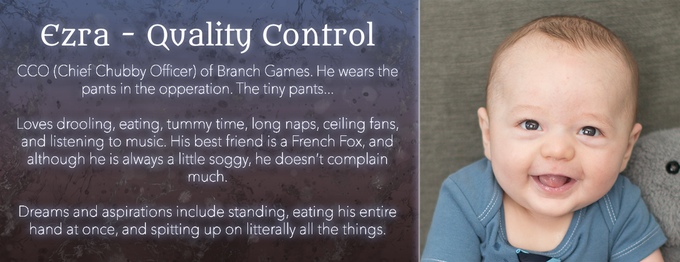
A baby being placed in a position is usually a joke, but it serves to highlight missing team members.
(Kickstarter: To Light Ex Umbra)
This sin isn’t just for babies though. It goes for any family member who has been given a job they have no experience with. The most frequent one I see is the wife being cast as a voice actor for a protagonist. Voice acting is such an important part of some story-driven games and can be the making or the breaking of one, just look at Metroid: Other M.

I don’t count this as a sin if the family member has experience in that job or is otherwise qualified. (Kickstarter: Nebula: Sole Survivor)
On one hand, hiring family can help keep the costs of Kickstarters down. On the other, a qualified person could probably do them better and faster. What always comes to my mind is, when working with family or friends, people may be too inhibited to say when they think one person is letting down the team. This is not the same as including family members in the game like easter eggs, that’s perfectly fine. Highlighting staff you lack or hiring incompetent people is never going to help your campaign.
The Lesson: Only hire family members if they are qualified to contribute.
Gibberish – What are you saying?
Some Kickstarters don’t make sense. I don’t mean as in, “this is a Kickstarter to lick your cat”. I mean, you read it 3 or 4 times and you are still uncertain what it is about. This usually comes down to spelling and grammatical errors, but sometimes developers simply can’t convey their ideas. My favorite example of this is the Kickstarter campaign for Earthlings. This campaign had GIFs and images, but trying to figure out what it was about was like deciphering a code.
This sin circles back to what I said earlier about investing in your project. Backers want to see you have a fully formed concept with your project and the whole idea of the text is to communicate your idea. If you are unwilling to invest enough time to proofread or enough money to get someone else to edit for you, why should a backer invest in you?
Think in terms of online dating. Studies show that spelling correctly increases the chances of the recipient of the message taking an interest in you. It’s a matter of respect, really. Taking the time to spell correctly is a way of extending respect and class to your audience. Maybe that’s just my inner English teacher talking, but the use of language is important.
The Lesson: Spell correctly and communicate effectively.
Pride (Or A Lack Of) – Updates
This is a sin that only really applies after a game has been funded. It is more to do with keeping your backers happy. Some Kickstarters like To Light Ex Umbra go entirely silent after they have been funded. Others, such as Quantum Suicide, bombard you with constant updates bordering on spam. There are a number of issues we can talk about relating to updates but I think we can stick to three: Content, Regularity, and Delivery.
Content:
An update serves two functions; it keeps your backers in the loop about a game’s progress and it lets them know the project is still going. The trick is to have updates that show backers evidence of the work that has taken place since the last update, or at least discusses it.
Regularity:
A big question is how often to update. Personally, I think once every two weeks is a good number, but monthly updates are also good. Essentially, enough time to accomplish things between updates. The update schedule should be regular and something you can maintain throughout the entire campaign. Most Kickstarters will start strong with updates and burn themselves out.
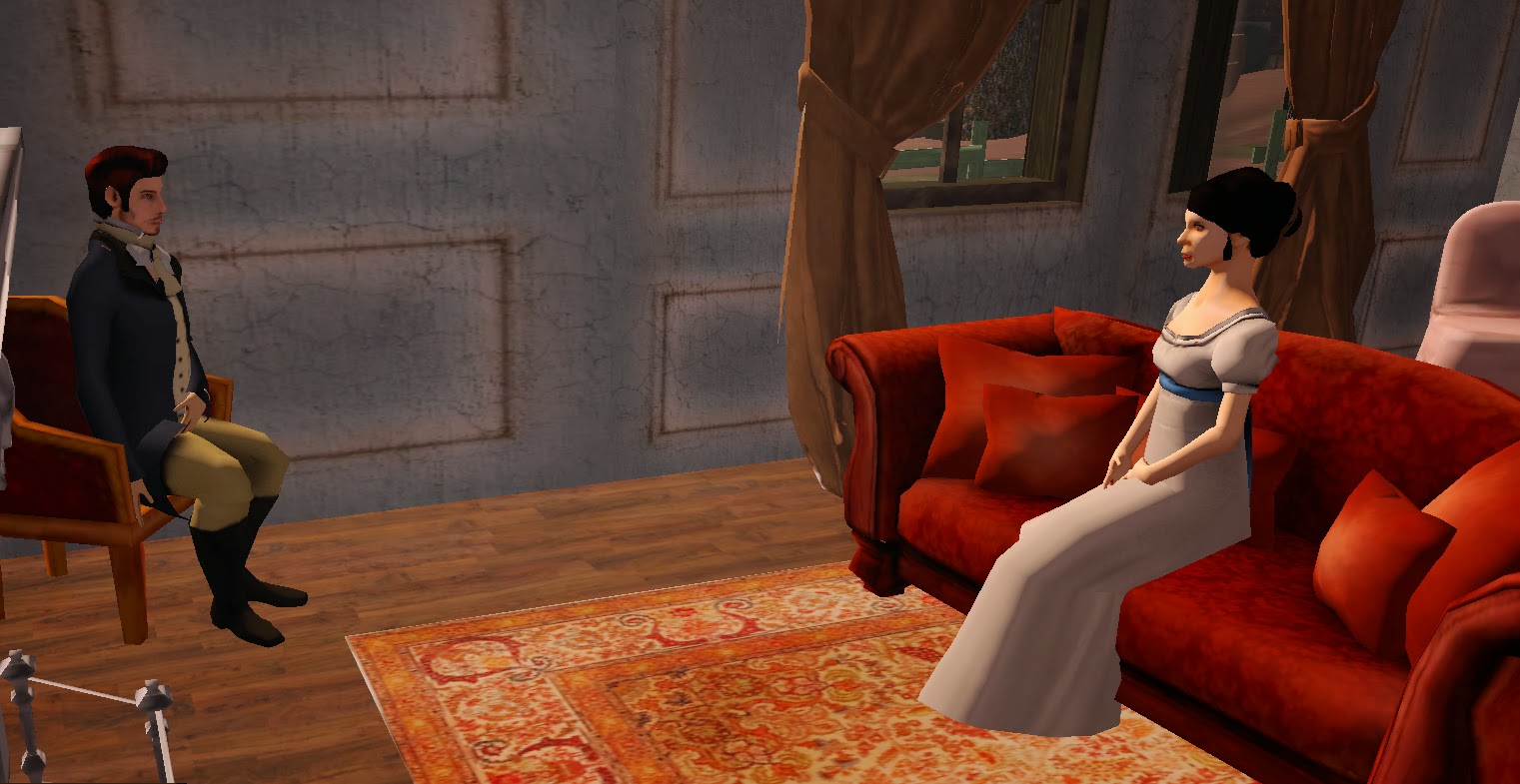
Ever, Jane took its updates off of Kickstarter and essentially seemed dead to outsiders.
Delivery:
Kickstarter allows you to send updates to your backers via its platform. I think this is the best delivery method since you have the option to have updates as a public record or backer only. Some Kickstarters start their own newsletters. If a campaign is accepting contributions outside of Kickstarter, newsletters can help make sure backer-only updates stay that way. Be aware that this can get a little messy for contributors, especially if they are subscribed to multiple Kickstarter newsletters. Personally, I don’t mind subscribing to the newsletters of Kickstarters that didn’t manage to get funding, such as Failure. These have a reason not to update via Kickstarter.
The Lesson: Create an update schedule which is both regular and manageable. Maintain the schedule throughout your campaign. Avoid taking your updates off of Kickstarter if possible.
Vanity – Pre-Rendered Gameplay Trailers
Have you ever bought one of those microwave meals with the delicious looking picture on the outside, only to open it up and find some shrimpy dried up vegetables and something that could be meat? That’s what I think of when I see a pre-rendered gameplay video on a Kickstarter campaign.
At best, all a pre-rendered video serves as is a proof of concept. I don’t think this type of video is beneficial to campaigns at all. Often they supply an unrealistic expectation of what the game will be like and increases the chances backers will be disappointed, should the final product fail to live up to that standard.
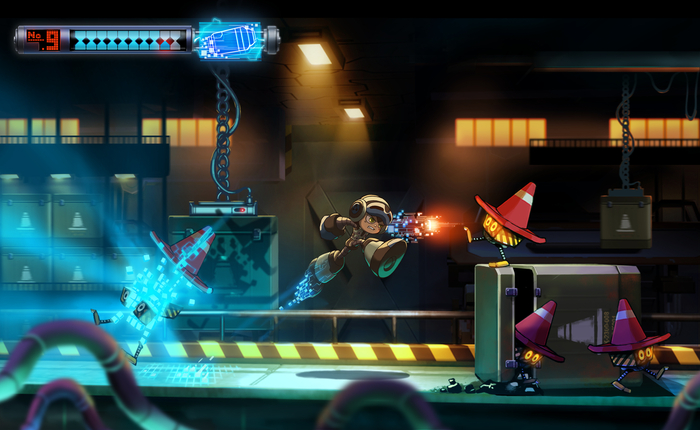
Misleading concept art can be a real turn off for fans.
(Kickstarter: Mighty No.9)
It doesn’t have to be a video. Even concept art that depicts the game looking far better than it actually ends up is a cause of major disappointment for backers. This is one of the things Mighty No. 9 fell prey to when they released their game.
The Lesson: Skip the pre-rendered crap and be realistic about your abilities.
Greed – The Funding Goal
This is the final hurdle where many people fall down. The truth is, it is difficult to figure out exactly how much money you need. You don’t want to ask for too much since that leads to a greater chance of not getting funded, but asking for too little may mean you don’t have enough to finish.
This is why having a pie chart or some other clear spending plan is important. It provides backers with insight into your project, but it is also an important exercise for the developer themselves to undertake. Working out the exact amount of money you need or at least a well researched estimation can be a confidence booster for both you and your audience. Developers need to also take into account the fee that Kickstarter imposes on your funding goal. It was partly a lack of financial planning and not asking for enough which killed the Dr. McNinja Kickstarter.
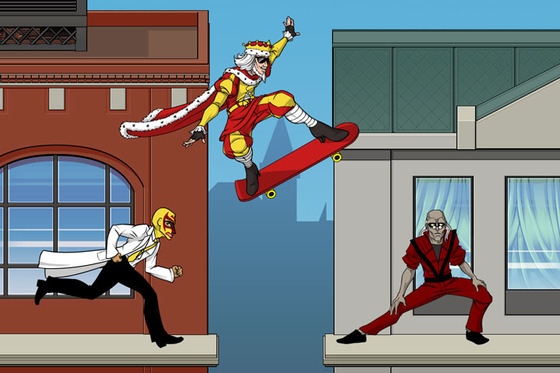
If McNinja had asked for more money when they were originally getting funding and planned better they probably would have succeeded.
There is some advice flying around the internet that I would like to whack with a book. It goes something like this: “you should ask for less money then you need and shoot to be over funded”. This piece of advice is adapted from one to do with planning events. In a situation where you want to make a speaker look popular you can choose not to put out enough seating. This means people have to stand and gives the impression that far more people turned up than expected.
Maybe this worked in the early days of Kickstarter, but now it is simply a bad idea. If you only get funded for your minimum, how will you achieve your goal? In the competitive world of Kickstarter, it is better to ask for the minimum you need and add stretch goals.
The Lesson: Plan what you need the money for as precisely as you can. Do not ask for more or less than you need. Remember that Kickstarter taxes you if you are successfully funded.
Think you can avoid these Kickstarter videogame sins and keep your nose clean? Well, good. Hopefully this helps you make a better Kickstarter campaign and get funded. The main point I think is to put the effort in. Effort and hard work shine through and it’s something every backer is looking for in a project. Just remember to go that extra mile and you’ll be in the clear.
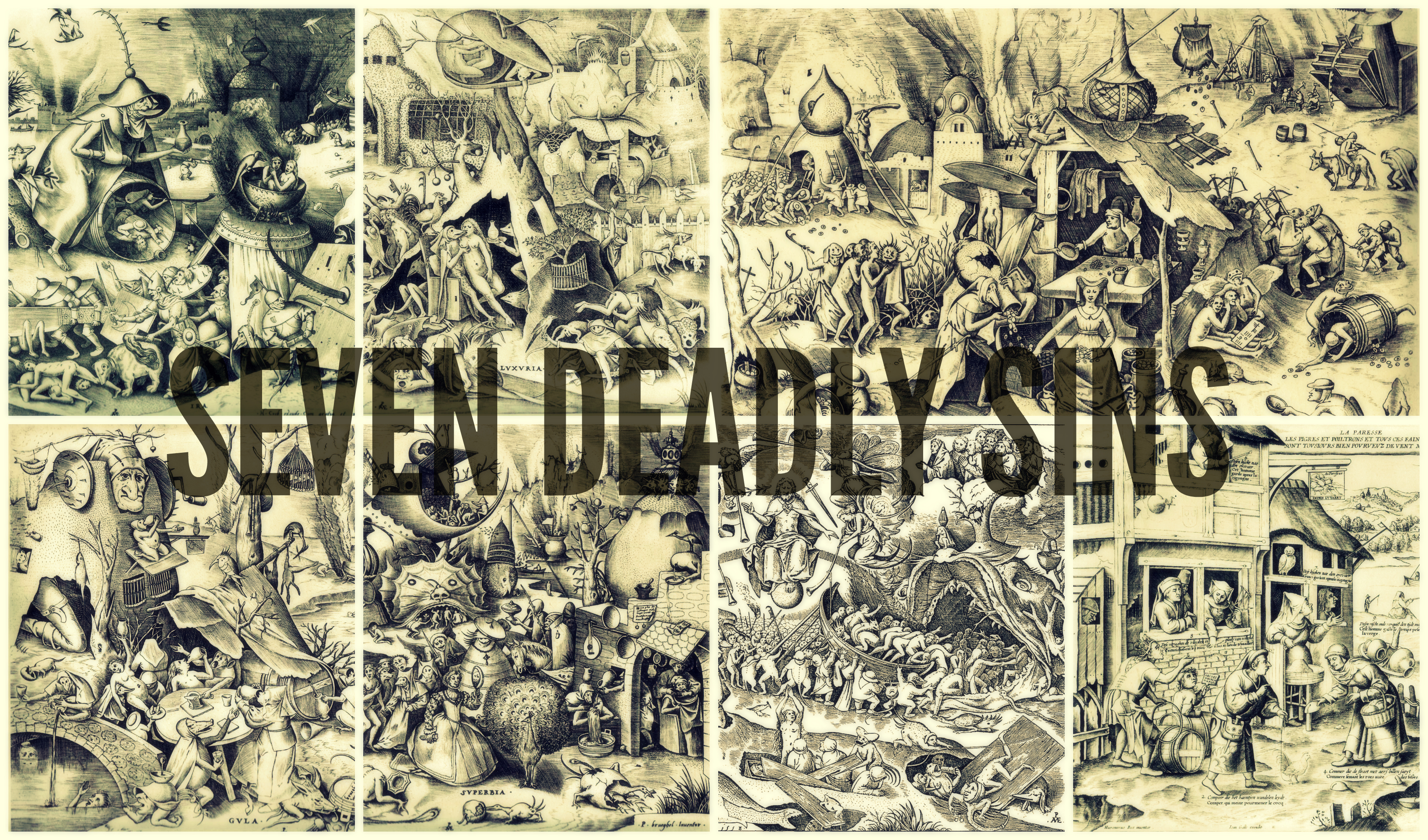
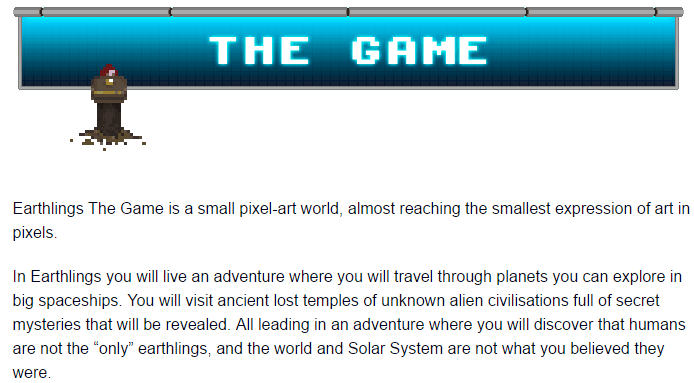




[…] Yup, it’s time for the Question of the Week! This week our question is inspired by the Seven Deadly Sins of Kickstarter video game […]